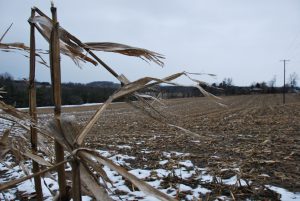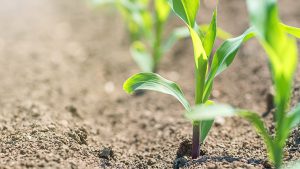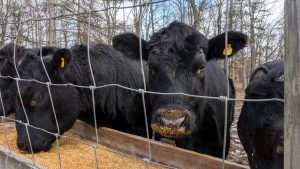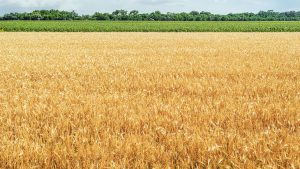Water management
THE WATER CYCLE AND WHY SHOULD WE CARE?
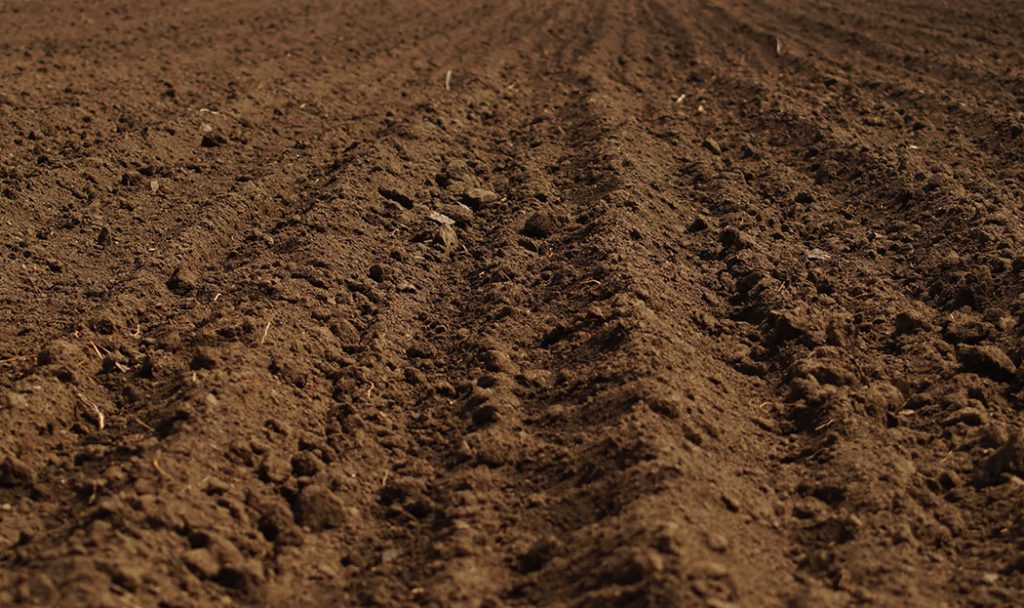
Water is a precious resource. The success of farm businesses and the health of our families depend on having a clean and abundant supply. Historically, agricultural technology has allowed us to manipulate the quantity and quality of water supplies to increase productivity. Today, this continues, with new technologies and a better understanding of natural processes. This article is the first in a series focusing on modern management of water for grain farms. Go to ontariograinfarmer.ca for more information.
ONTARIO HAS A humid climate and plentiful water supplies but there are times of the year when crops suffer drought stress and we ask the question, should grain farmers better manage water?
Water is the life blood of agriculture and at some level of all life. Water is the key essential element in all biotic and abiotic processes on earth. The abundance of water across the globe is enormous, primarily within the earth’s oceans with most of the fresh water locked in glaciers and ice caps. Smaller quantities of water are present in groundwater, lakes, wetlands, rivers, streams, creeks, and rivulets. A surprisingly small quantity of water is stored in our soils considering the total volume of water globally.
Despite the abundance and distribution of total water globally being large and everywhere at a macro level, the amount of high-quality fresh water available to sustain the life of humans, mammals, plants, insects, and microbes is extremely small.
While we recognize the key role and importance of water in life, we seldom give it a second thought, unless of course we have a deficit/abundance (e.g. drought/flood) of it available.
Increasingly we find ourselves with too little or too much water in agriculture. Our response is to try and deal with it immediately and just drain it out or pump it on, without more sustained thought of how we manage it within and across our production systems.
Whether it is man-made climate change, just the current stage in a long cycle of global weather patterns, consumption through increased population, inefficient water uses, or increasing yield potential of crops which demand more water, we need to better understand and then manage water.
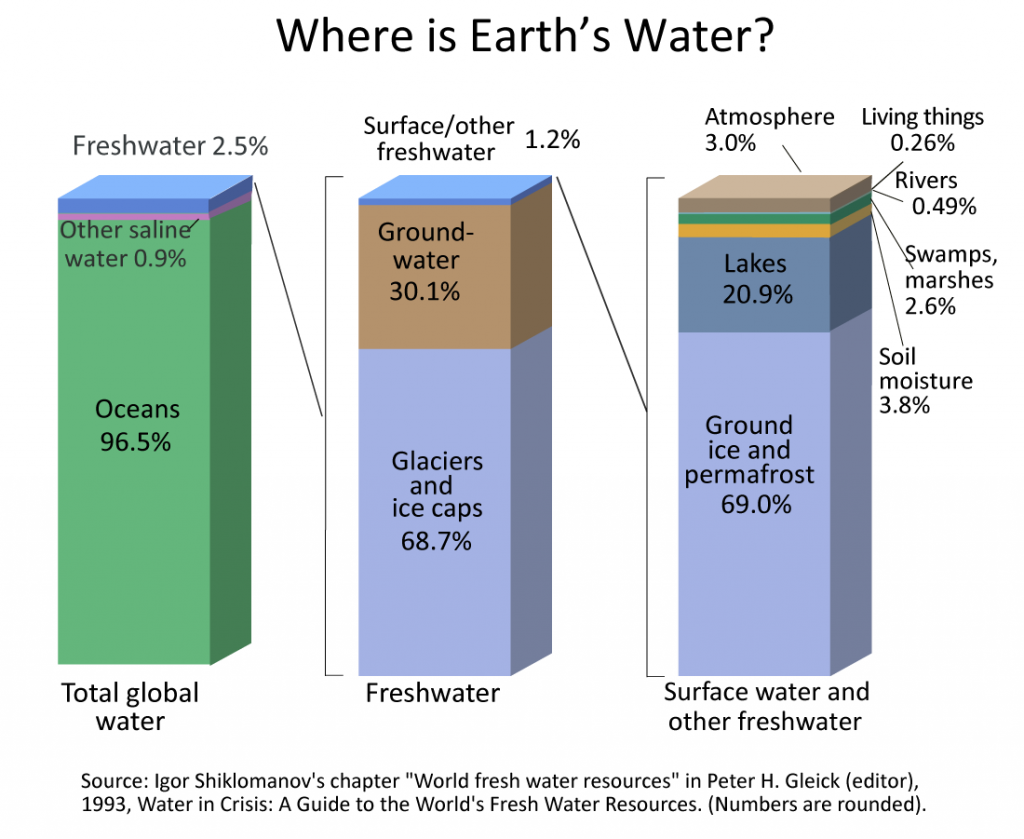
WATER FLOW
Water flows through every part of a farm property. Precipitation falls on land and can flow overland as runoff to surface water or be held by soil or vegetation. Some will infiltrate through soil materials to be stored as groundwater. Groundwater can then move to lakes, rivers, ponds, wetlands, or to the soil surface. At the soil surface, water can be evaporated directly to the atmosphere or transpired (evapotranspiration) through plants.
The Great Lakes represent an enormous reserve of fresh water, but only one per cent of the total volume is renewed each year. The precipitation that falls in the Great Lakes basin generates the flow of the St. Lawrence River. Of that renewable portion (the flow of the St. Lawrence), we currently consume approximately one to two per cent (if we consider takings from both the Canadian and U.S. sides of the basin). Compared to the rest of the world, we are water rich.
Living in eastern Canada, it’s hard to imagine that some of the world’s grain production areas get as little as 25 to 50 mm of rain per year, with rainfall events occurring only once or twice a year. The International Water Management Institute estimates 25 per cent of the world’s population lives in regions that will experience severe water scarcity in the future. Compare this to Ontario where the annual precipitation ranges from 660 to 1,020 mm. But in some summers, we often lack the 500 to 600mm required to finish a grain crop. Or, rainfall occurs intermittently with big dry gaps in between, leading to yield impacts or even crop failure.
YIELD IMPACTS
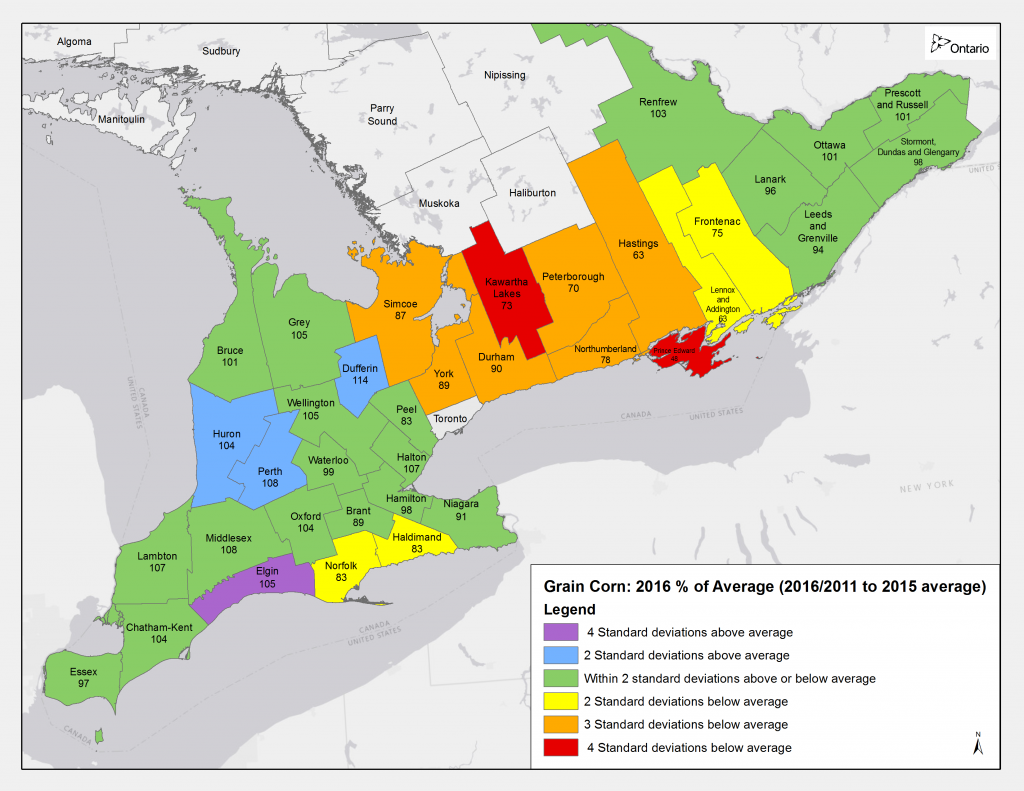
Using corn as an example, the 2016 drought had devastating effects for some farmers. But looking across the province, the impacts are more muted.
The greatest decrease to corn yield in 2016 was in Ontario’s central and east regions shown by the red and orange areas of the map to the right. When looking at the amount of rain that fell during June to August, it was not far off long-term average. However, there was a long period in July with low rainfall, below 60 per cent or even 40 per cent of average, a critical time in corn growth stage (pollination).
What will happen in the future with potential climate changes? Will we see greater disruptions to rainfall patterns and a need to invest in enhanced water management?
The Ontario Climate and Agriculture Assessment Framework (OCAAF, 2017) applied climate change models to corn production in southwestern Ontario projecting yield to 2050. The models suggest a 25 per cent increase in Corn Heat Units (CHU) but summertime precipitation remaining the same. With increased heat, crop water needs are projected to rise to 550 to 640mm from their current level of 500 to 600mm.
OCAAF projected significant increased corn yield due to the increased CHU but did not project how the predicted static precipitation would reduce this potential. Overall, their climate change models indicate that annual rainfall will increase in Ontario by 2050, but that this increase will be in winter, spring, and fall, times when we are typically trying to reduce moisture in the soil.
Work done by Qin Xu and Glen Fox at the University of Guelph (funded by the Ontario Ministry of Agriculture, Food and Rural Affairs (OMAFRA) shows which counties might see the largest change in yields due to increasing temperature and increasing variability in rainfall. Further, this study shows where and when the benefits outweigh the costs to irrigate. Their bio-economic crop yield model is built using historic weather and county level yield data. The model is then subjected to future temperature and precipitation under four climate scenarios based on RCP 8.5 and projected out to 2070.
RCP 8.5 is a scenario used in climate modeling, it is the Representative Concentration Pathway that determines the level of carbon in the atmosphere on a given date. The concentration of carbon affects temperature increases.
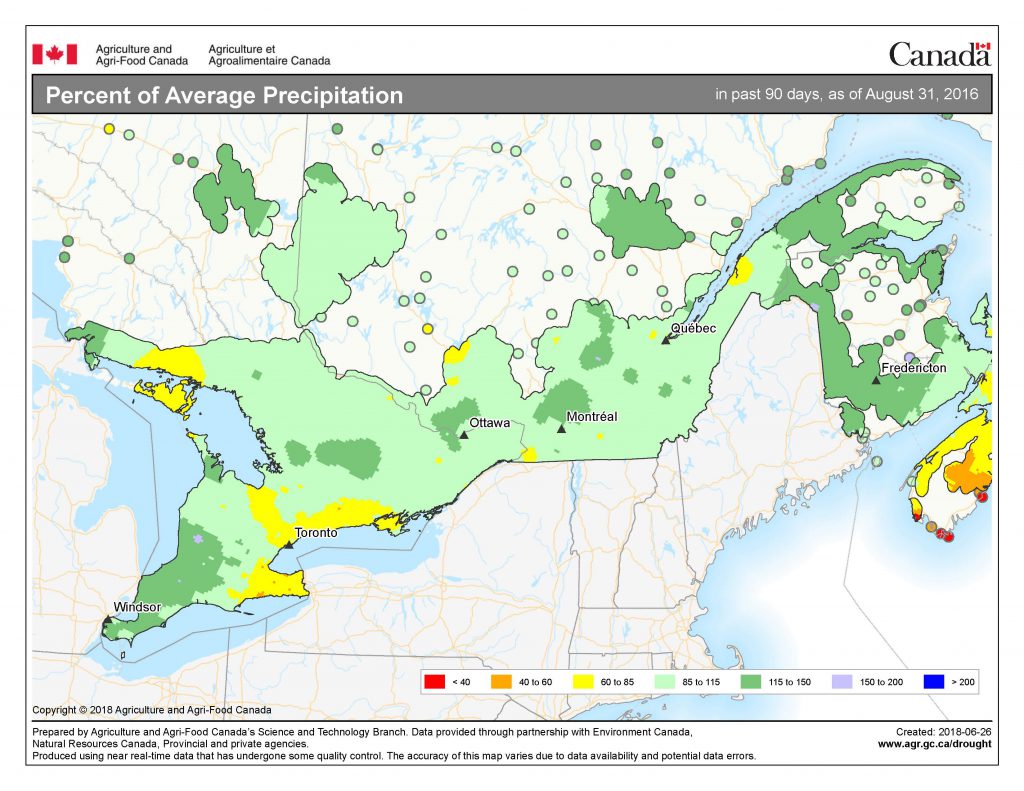
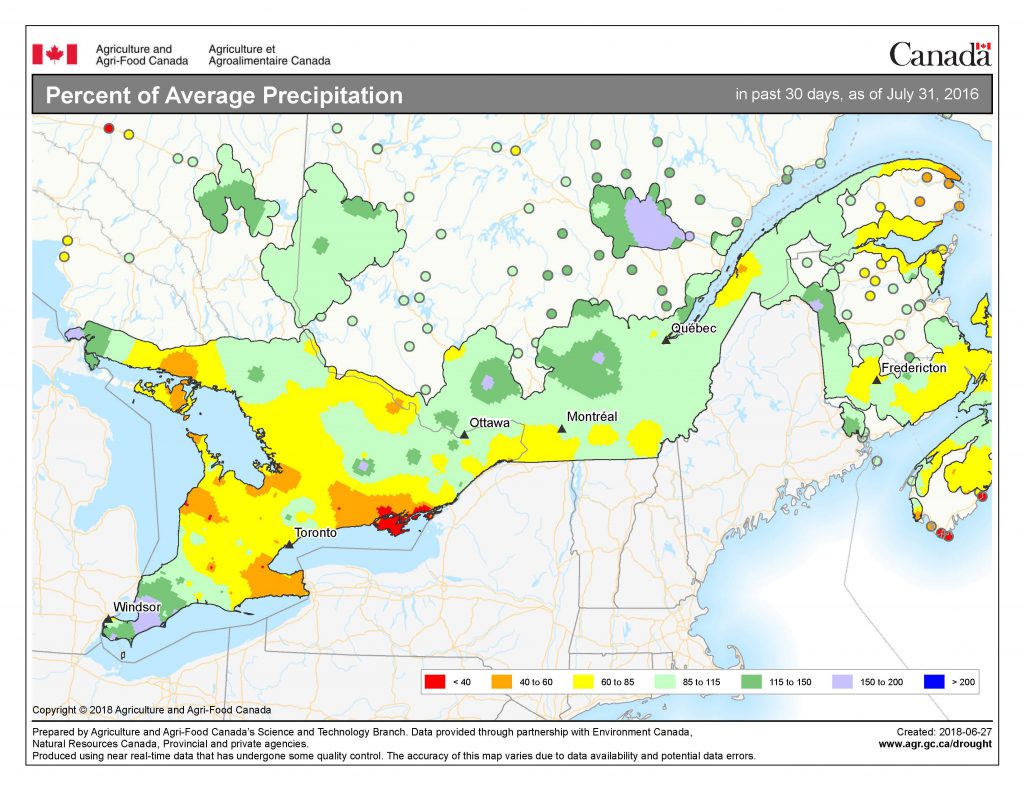
The scenarios have increasing variability in growing season precipitation. In all the scenarios, corn and soybean yields increase with the increasing temperature, but the variability in the yields increases. The projected corn revenue for Ontario increases by $220 million per year from 2020 to 2070, but in scenarios with greater rainfall variability this increase is only $170 million.
Irrigation has greater benefits in southwestern Ontario (Essex, Chatham-Kent, Lambton and Middlesex) and in later time periods, 2054 to 2070. Irrigation has the potential to reduce this variability and has a larger beneficial effect on corn yields than soybean yields. Watch for a future article in this water management series which will examine the economic pros and cons of irrigation more in depth.
This predicted change in the pattern of rainfall is supported by other work by the U.S. Department of Agriculture and is not a recipe for good sustainable crop production. Harvesting crop under poor (wet) field conditions, planting in tough (wet) conditions, and then having it try and grow in drought conditions. The impact directly on crop yield and soil health could be significant. This doesn’t sound like a successful path.
Spring 2019 is an example where weather conditions led to fields not draining or drying significantly and this delayed field operations, including planting date, and caused significant compaction and other damage to soils.
The frequency of extreme precipitation is increasing (Kunkel et al, 1999) and this increases yield losses from flooding and wet conditions — which is already one of Ontario’s greatest production risks. Tile drainage is often seen as the complete solution to too much water — but what are the implications of adding more drainage?
We need to think more consciously of water management in our cropping systems. How do we create a bigger bank account in the soil to hold more water, for a longer period of time, while also still allowing conditions to support field work, good crop establishment, and growth? A lot of this has been the route/ root of the soil health indicatives of late. We don’t want to remove a large volume of water, a precious resource essential to crop productivity, and then just hope Mother Nature will give us back water through timely rains to meet crop needs through the remainder of the season. Managing the rainfall we receive, now and in the future, may be our best opportunity to maximize grain yields in Ontario.
Go to www.ontariograinfarmer.ca for links to more information including an upcoming webinar by Qin Xu and Glen Fox.
For more information on water management and best management practices, go to the OMAFRA Adverse Weather webpage (www.omafra.gov.on.ca/english/crops/weather/adverseweather.html).
What is the role of tile drainage as a solution for more variable rainfall patterns and more intensive storms? In the next article of this Water Series, we will discuss how drainage works and how to make knowledgeable decisions about increasing drainage on your fields. •
Other articles in the series:
• Producing the best grain crop possible (September 2020)
• The water cycle and why should we care (October 2020)
• The role of farm drainage (November 2020)
• Improvements through soil health (December 2020)
• A second look at farm drainage (January 2021)
• Is irrigation of grain crops feasible (February 2021)
• Irrigation case study (March 2021)
• Understanding groundwater (April/May 2021)









